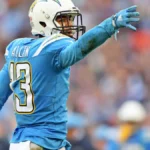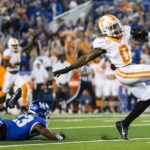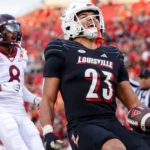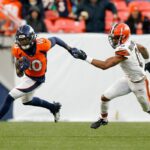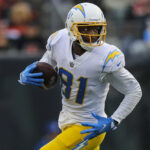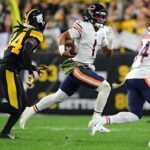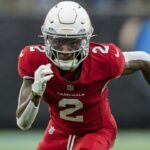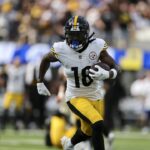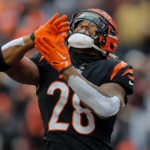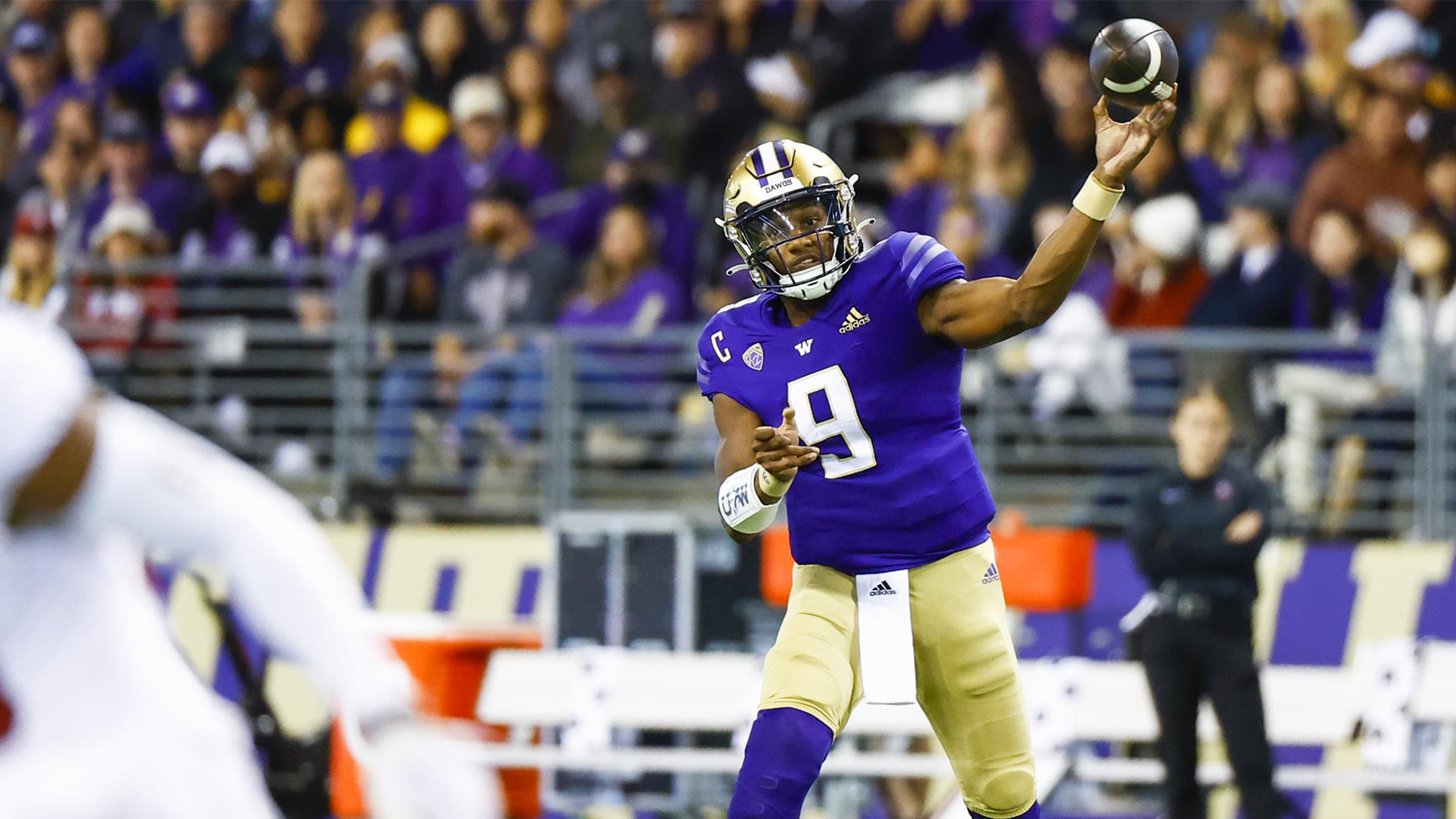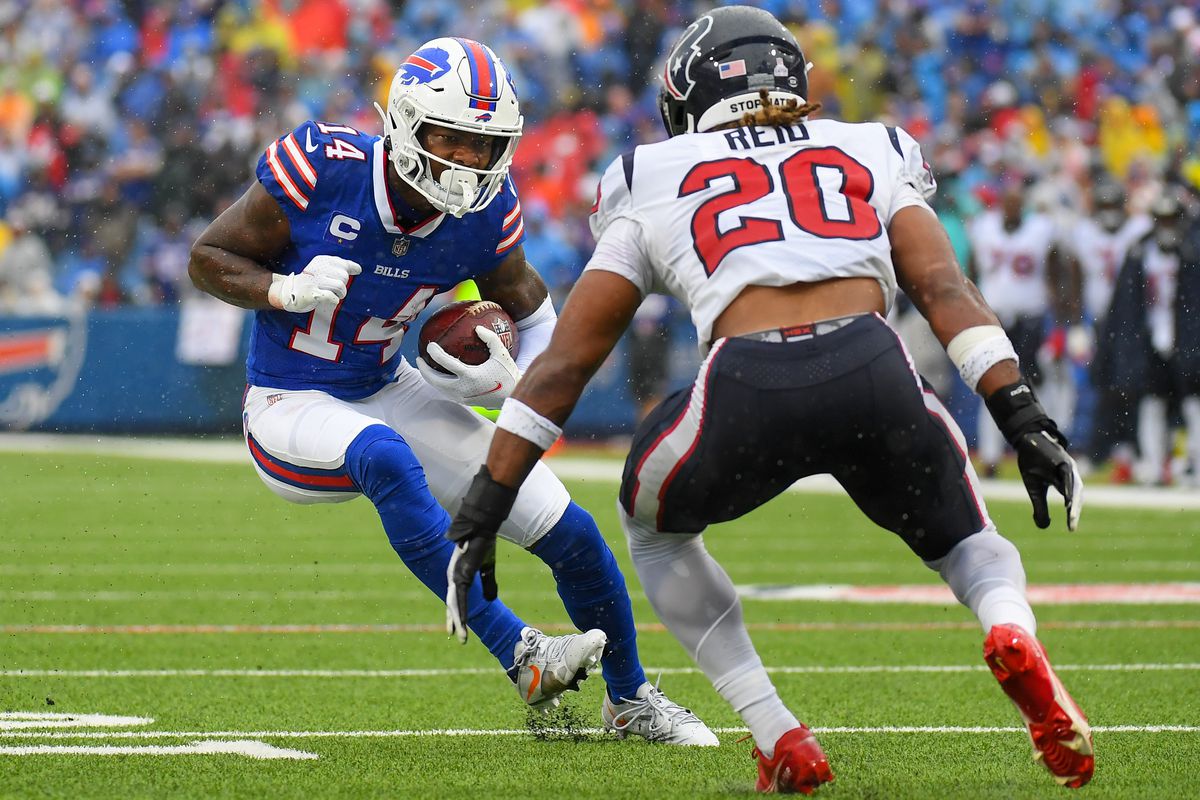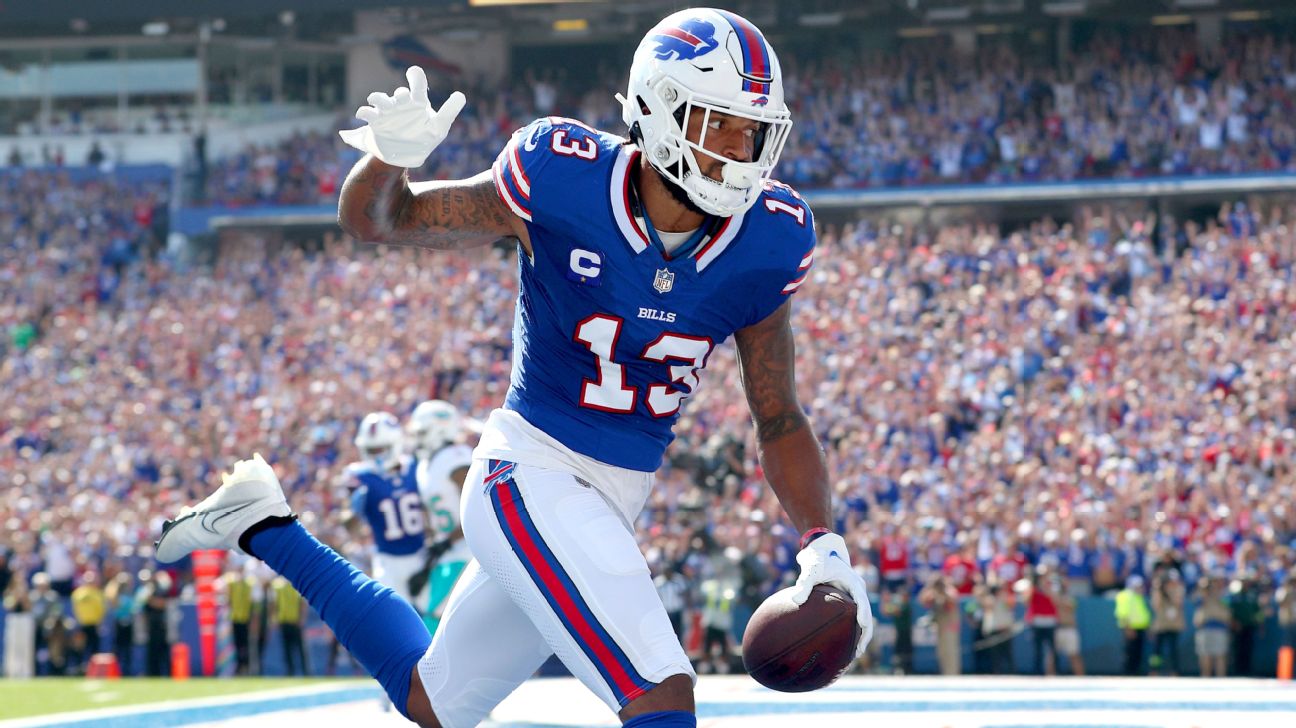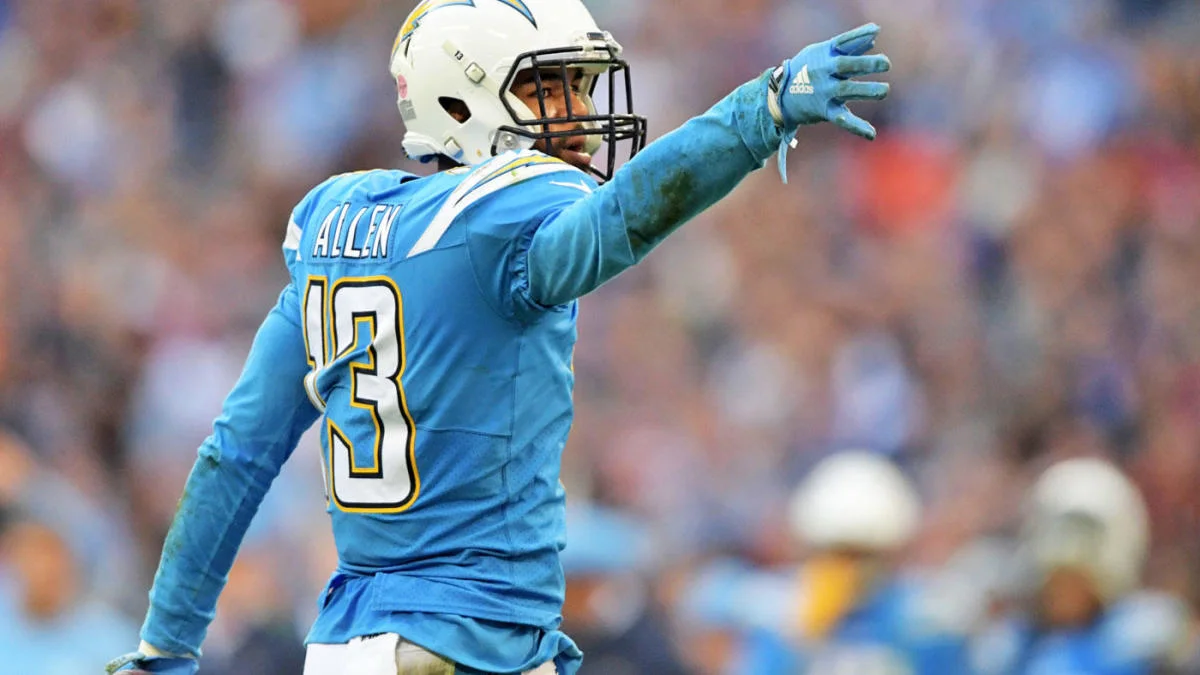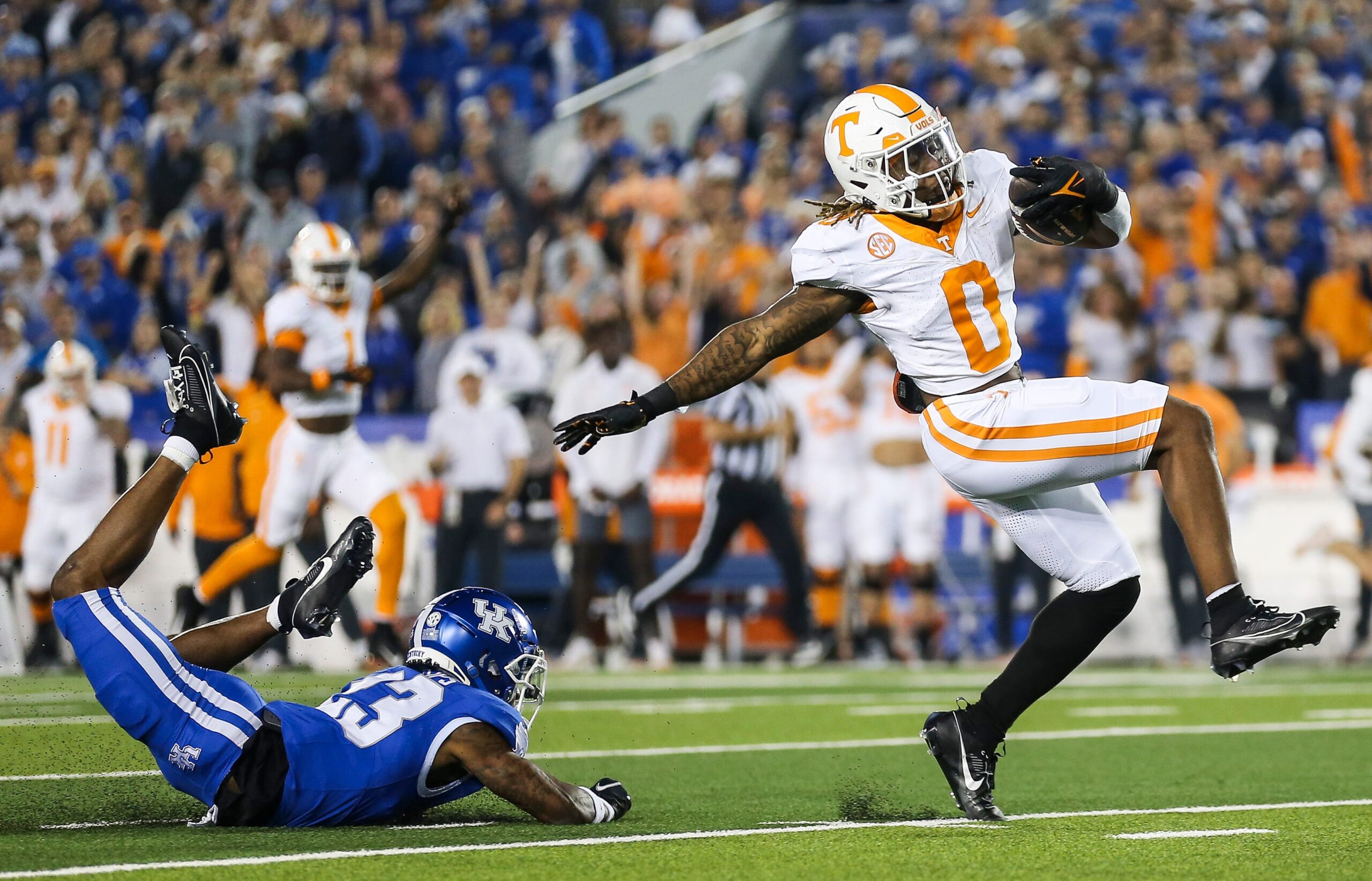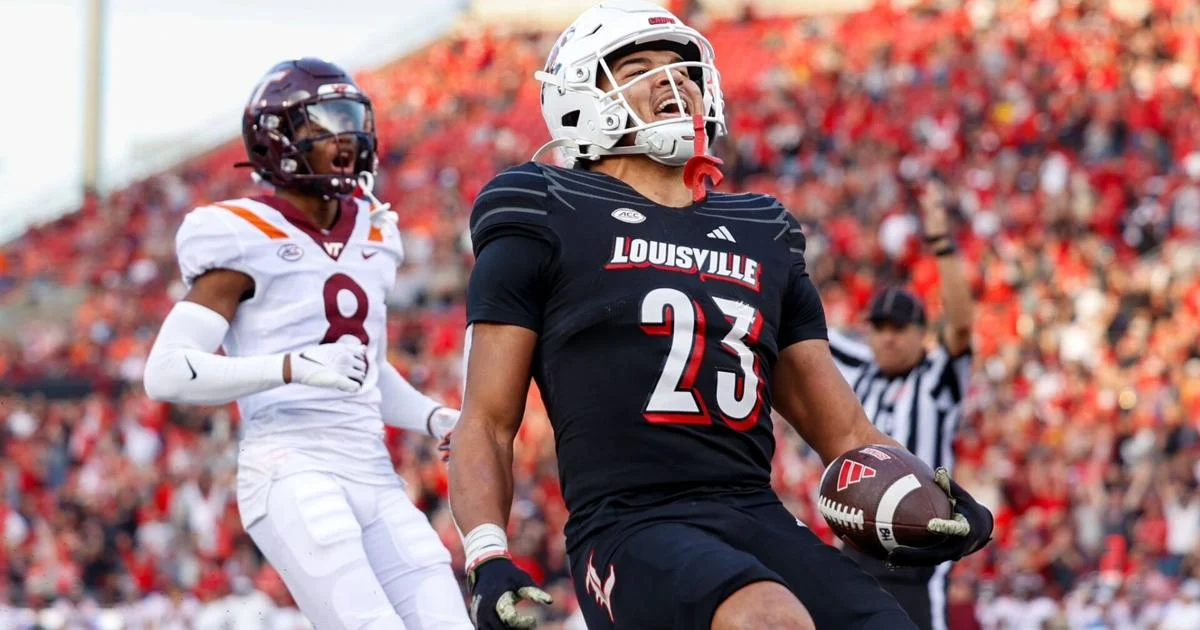Finally, summer vacation is here. Now with far more free time, especially with Game of Thrones coming to an epic conclusion, my sole focus is finishing up my first round of 2016 Fantasy Football PPR Rankings. As a reminder, this first set of rankings is purely based off my gut reactions, as I’ve deliberately avoided mock drafts, ADP, and other expert rankings for the sake of keeping these my independent thoughts. I’ve of course read every Rotoworld blurb since the Super Bowl and tracked every offseason move to ensure they are informed. The key is keeping them unbiased.
Thus far, I’ve made it through all the fantasy relevant quarterbacks (Elite, lock QB1s, QB2s and fliers). We’ve also begun our running backs, covering the high-end and also the middling RB1s. Today, we look at the low-end RB1s that are best served as high-end RB2s. As a quick refresher:
Tier 1 – Talented, three-down workhorses in explosive offenses:
1. Le’veon Bell
2. David Johnson (considering bumping him below Ezekiel with the newfound workload questions)
3. Ezekiel Elliott
Tier 2 – Lock RB1s
4. Todd Gurley
5. Devonta Freeman
6. Lamar Miller
7. Adrian Peterson
Tier 3 – Middling RB1s
8. Eddie Lacy
9. Doug Martin
10. Jamaal Charles
11. Mark Ingram
Tier 4 – Low End RB1s, High End RB2s
Tier breakdown: Unless you’re going full-on Zero RB Theory, this is the last acceptable tier for your RB1. Using a third and fourth rounder on two of these runners to pair with two elite receivers (or Gronk) is a route I’m likely to take in many drafts. The ceilings of these options aren’t much lower than the tier above, but the roadblocks to reaching their full potential are definitely greater. This will likely be reflected in their prices, however, making this a group I will assuredly dip into at least once come draft day. Landing any of these options as an RB2 would be the dream.
12. Dion Lewis (New England Patriots) – Lock PPR RB1 on the field, major health risk
The fifth best RB in PPR points per game average, Lewis was scorching the league with unbelievable shiftiness and underrated power before going down with a Week 9 ACL tear. The Pittsburgh product is often miscast as the “sub, third down” Patriots back, but any fan of the greatest team on Earth knows otherwise.
Indeed, Lewis was among the best pass-catching running backs in the NFL during his shortened 2016; he racked up 36 catches in just seven games and was heavily used in space given his soft hands, tremendous route running, and dangerous agility and suddenness. Just as frequently, however, Lewis was pounded between the tackles on the early downs and at the stripe. Here, the dynamic threat displayed surprising power, impressive burst and wiggle in tight creases, and the ability to hide between his blockers due to a small but sturdy 5’7” frame.
In short, Lewis was a highly effective every-down threat. This made the diminutive dynamo an invaluable cog to the Patriots early-season offensive explosion and helped him rack up 622 yards and 4 TDs in just seven games (over 1,400 total yard, 82 catch, and 9 TD pace). Lewis was a true fantasy RB1 while healthy, scoring above 16 PPR points in five of seven contests (one of the games under he was limited by an abdomen injury, the other was when he tore his ACL), with three 20+ PPR point showings.
Yet, health remains the major concern with Lewis: he’s never received a substantial workload and held up at the NFL level. Lewis also sat out all of 2013 and 2014 recovering from a fractured fibula; while both of these major injuries seem “flukier” as compared to constant, nagging soft tissue injuries, expecting a full 16 games from Dion seems a bit foolish.
Indeed, all reports on his recovery have been positive, with the latest reports on June 13th stating he was making cuts and practicing without a brace. Additionally, the Patriots clearly value all he brings to the table, signing him to a mid season extension last year while adding little to the backfield this offseason. As such, Lewis seems a near-lock for RB1 production while on the field, yet major concerns about his ability to stay healthy keep him ranked in the low-end RB1 tier.
https://cdn1.vox-cdn.com/thumbor/3F2ZiM05SDHnZvgfx42sSDCA_hM=/cdn0.vox-cdn.com/uploads/chorus_asset/file/4147912/dion.0.gif
13. Matt Forte (New York Jets) – Elite ceiling with significant age, mileage, and workload concerns
Here’s a major boom or bust back who likely won’t finish 2016 as a low-end RB1; at season’s end, he’ll likely be a locked-in and elite contributor, or a mid-20s type of guy, and the #13 ranking takes both these outcomes into consideration.
Why he could be elite: Forte is one of the ultimate dual threat backs, and since 2008 when he was drafted, no back has tallied more than Forte’s 12,718 yards from scrimmage. This meshes perfectly with offensive coordinator Chan Gailey, who loves throwing to his RBs and has already said he’ll tailor his offense to Forte’s skillset:
“Asked how Forte will fit in his scheme, Gailey simply replied, “That’s not the question. The question is, how do we adjust the system to fit Matt Forte?”
This suggests some heavy usage and should be music to fantasy owners ears, as Gailey’s recent featured backs have been highly productive fantasy products: in 2011, Fred Jackson, a back in the similar mold of Forte, produced 1376 total yards and six TDs in only 10 games (an absurd 2,200+ yard, 10 TD, 62 catch, 340+ point fantasy pace); in 2012, CJ Spiller put together his lone useful campaign under Gailey’s watch with over 1,700 yards and 8 TDs; out of the NFL until 2015, Gailey returned to coach Chris Ivory into an AFC Rushing Title. This could be the ideal skillset and coordinator marriage and yield massive yardage and reception totals for Forte.
Why he could bust: Forte’s over 30 and with high mileage. Running backs who stay healthy and productive with these red flags are few and far between. Additionally, the team brought back skilled pass-catcher Bilal Powell and signed underrated power back Khiry Robinson this offseason. These may have been mere depth plays, but also could create an obnoxious three-headed monster depending on how this workload shakes out. Though unlikely, Forte could become a between-the-20s back who cedes valuable goal line and third down work.
Ultimately, I expect Forte to receive a healthy workload and produce some strong RB1 numbers in Gailey’s system, but to breakdown eventually. Drafting Powell and Robinson late and securing this entire backfield would be a wise, cost-effective play, especially until we know more about the workload distribution.
http://gifrific.com/wp-content/uploads/2012/09/Matt-Forte-One-Handed-Catch-vs-Colts.gif
14. Thomas Rawls (Seattle Seahawks) – Enormous Tier 1 ceiling, but cavernous floor
Rawls’ offseason quagmire makes him tough to rank. The UDFA remains sidelined from a fractured ankle, yet coach Pete Carroll “absolutely” expects him to be ready for Week 1. Rawls flashed brilliance as a featured back in Marshawn Lynch’s absence, yet the team has been lukewarm in endorsing him “the guy”… and also brought back Christine Michael…and spent a third, fifth, and seventh round picks at the position…after which Carroll flip flopped and said “who we are and what we are about is Thomas,” causing beat writers to project Rawls as the bell cow. Uh…what??
So is he the guy? Is he healthy? These questions remain to be answered and could send his stock soaring or plummeting. Let’s look at what we do know:
The team loves to pound the rock. Since 2012, the Seahawks have ranked first, second, second, and third in rushing attempts and third, fourth, first, and third in respective rushing yardage. The lead rusher will be fed some delicious volume.
Rawls can ball: The Central Michigan product racked up 830 yards as a rookie despite being “the guy” on only six occassionas. In these six games, Rawls racked up 126 carries (21 average), 712 yards (119 yard avg), and four rushing TDs alongside seven catches, 67 yards and another TD. This would’ve paced him for 1,898 rushing yards (2077 total), and 11 TDs — elite RB1 numbers. He flashed week-winning ceiling against San Francisco when he rushed for 209 yards, a TD, and added three catches for 46 yards and a second score (40.5 fantasy points). On the season, Rawls lead the NFL in yards per carry (5.65) and average yards after contact (2.68) and essentially looked like a younger, fresher Marshawn Lynch.
As such, the ideal world would have a perfect marriage of talent and volume to yield a season-winning RB1; if his workload and health were more guaranteed, I’d have Rawls ranked at #8 behind Adrian Peterson. These two factors are indeed major roadblocks to Rawls reaching his immense fantasy ceiling, and as such he makes a very sexy, but also very risky investment. Still, this is a dice roll I see myself taking quite a bit, as long as he’s paired with a high-floor RB1 or RB2.
https://usatthebiglead.files.wordpress.com/2015/10/thomas-rawls-td-run-against-bengals.gif?w=1000
15. Latavius Murray (Oakland Raiders) – High end RB2 with real RB1 upside behind top-three line in ascending offense
Here’s one of the best off seasons that no one is talking about.
First, and most importantly, the team made massive moves to an already improving offensive line: beastly left tackle Donald Penn was brought back, while the team signed the massive Kelechi Osmele for the left guard spot. As Pro Football Focus explains, both signings are crucial, as now Osmele can play his more natural position along the interior, where he graded out at 89.0 overall and, more importantly for Latavius, a 94.3 run blocker (being forced to play left tackle brought Osmele’s season-long PFF grade to a 79.3, despite the high marks at guard). This significantly upgrades by far Oakland’s most glaring line weakness, as 2015’s left guard J’Marcus Webb graded out at 44.0, strong enough for a 70th ranking among guards. Amidst these major moves, PFF now boldly asks if Oakland boasts the strongest O-line in the entire league, even above Dallas’ maulers.
Regardless of your feelings, the Cowboys have proven how huge the offensive line can for a running back’s fantasy value; Oakland’s front five are now among the best From one end to the other. These monsters should pave massive lanes for the powerful and fast Murray to burst through, in addition to providing Carr time to extend drives and keep the offense on the field longer.
Additionally, despite expressing a desire for greater depth at running back, the team made no major moves at the position this offseason; the only backfield addition was sixth rounder DeAndre Washington. True, the team has talked up Washington as “a complete back” and mixed him in with the 1s during OTAs, making the Texas Tech product a necessary handcuff for Latavius investors and a sexy sleeper regardless. Nonetheless, while Washington may steal some third down work and a few series a game, this figures to once again be the Latavius Murray show.
In 2015, his first season as a feature back, Murray flashed plenty of promise and also some concern. Positively, the frightening speed-size combo erased health doubts, withstanding 266 carries and making it through all 16 games en route to 1066 rush yards. Murray also surprised in the pass-game with 41 receptions and 232 more yards. Nonetheless, his on-field play was inconsistent. At times, Murray displayed that burst, power, and straight-line speed that makes him so appealing; yet, he also ran into his blockers a bit, and definitely wore down over the stretch of the season, averaging under 3.0 YPC in four of the final six contests.
Head coach Jack Del Rio sums up Murray’s 2015 well, while also confirming the team doesn’t consider RB a glaring need: “It’s a milestone (reaching 1,000 yards), and he was solid. He would tell you there’s more out there. He’s still just scratching the surface. There’s a lot more upside and opportunities to break a tackle or make a guy miss or hit the hole just right. Another year in the system will help him as well.”
I agree on the upside front, which many fantasy experts seem to be ignoring. With a year of starter experience under his belt, Murray enters 2016 behind one of the league’s top offensive lines and as the feature back in what projects to be a highly competent offense. The team returns all the major surrounding pieces in Carr, Amari Cooper, and Michael Crabtree that led to a massive 106 point increase in 2015 scoring (359 total points in 2015, as compared to 253 in 2014). A second scoring leap of this nature seems unlikely, but reaching 400 points with the skill position continuity and line upgrades is certainly plausible. Murray’s underwhelming six TDs from last season have a real chance to double, giving the underrated back a strong chance at repeating or improving his 2015 finish as the eleventh best PPR fantasy back.
https://usatthebiglead.files.wordpress.com/2014/11/latavius-murray-touchdown-run-against-kansas-city-a.gif?w=1000
16. Lesean McCoy (Buffalo Bills) – Major health concerns mar RB1 setup
My guess is most experts would rank McCoy atop this tier, and they have solid reasoning. As compared to any other runner in this group, McCoy has by far the highest workload security. Offensive Coordinator Greg Roman has always featured run-centric offenses dating back to his 49ers days, and last year’s Bills were no different: the team ranked first in team rushing yardage (2,432 yards), tied for first in rushing TDs (19), and second in attempts (509). Volume will not be an issue for Shady, and historically McCoy has been elite in featured roles.
Yet, success in fantasy doesn’t come from chasing the past, and Shady’s 2016 narrative features plenty of warning signs. For one, I feel his “elite” ability has begun aging away. McCoy only topped 100 yards rushing three times last season, and fell below 4.0 YPC in half of his 12 contests. At times, he appeared just as nimble as ever, with plenty of his change-the-field and outrun the defense type of runs. Yet, he also appeared sluggish and too indecisive in his reads more often than not.
True, his often underwhelming game tape was likely more health-related versus reduced ability. Yet, injuries have become a major concern for the once durable back, and his shifty style of play that makes him so dangerous is greatly hindered with nagging pains. Last year, he missed four games, but was definitely hampered with x hamstring or y ankle in many others. Moreover, he’s already been shelved during 2016 OTAs with some mysterious ailments, before taking a single hit.
Ultimately I feel McCoy’s massive historic workload is starting to catch up to his smaller frame, and as such his on-field effectiveness and overall health are waning. He comes with the safety of assured volume when he plays, and a guaranteed RB workload is pretty rare these days. If he maintains his health and ability through a full season of massive workloads, Shady would ascend to the elite tier and destroy this ranking. I simply don’t think he’s going to hold up, making Karlos Williams an essential handcuff (if he stops getting fat and blaming it on his pregnant wife).
https://cdn2.vox-cdn.com/thumbor/uhfFe17nfPyH9L7deadEp96XezI=/cdn0.vox-cdn.com/uploads/chorus_asset/file/4243497/mccoy.0.gif
17. C.J. Anderson (Denver Broncos) – Is he a true three down Kubiak workhorse? Crowded backfield raises doubt… If it even matters
Re-read the majority of CJ Anderson 2015 Season Outlooks and there’s a solid chance you’d hear plenty about head coach Gary Kubiak. His past reliance on three-down workhorses, the successful zone blocking scheme, the variety of past fantasy monsters these have produced — 15 of 21 Kubiak’s coached squads have featured a 1,000 + yard rusher, and those backs averaged 12 TDs. Terrell Davis, Clinton Portis, and Arian Foster all won owners championships in this scheme, while lesser talents like Reuben Draughns, Mike Anderson, and Justin Forsett all had RB1 campaigns under Kubiak’s watch. These positives still remain in play for CJ Anderson’s 2016 season.
Here’s where the storyline sours.
Line Problems: Denver’s line is atrocious and lost by far their best piece in Evan Mathis. Kubiak’s scheme can mask only so much deficiency, which will be even harder with the new limitations on chop blocking. A one-cut-and-go offense can’t be effective if lanes never emerge, and these guys struggled to generate any push in 2015. The additions of Russel Okung and Donald Stephenson at the tackle spots will help, but the interior line could be brutal.
Role questions: Despite Kubiak’s workhorse tendencies, Anderson’s featured role cannot just be assumed (as 2015 made obvious).He didn’t show enough to clearly beat out a useless Ronnie Hillman last year (who the team recently brought back) and now Anderson has to contend with a talented rookie in Devontae Booker, who’s already proclaimed his intentions to steal the job. Similar to last year, we’re already getting puff pieces Anderson’s role:
#broncos Kubiak said CJ Anderson is in best condition he's seen him in andhas responded to competition "he's ready to be an every down back"
— Troy Renck (@TroyRenck) June 9, 2016
Earlier in the offseason, we also got the standard “scratching the surface, best is yet to come” comment:
“C.J. played his best football at the end of the year,” Kubiak said. “I think C.J. hasn’t even reached the heights he can reach. I think C.J. is really just getting started. Being in our system again, if C.J. can stay healthy and stay on the field for 16 weeks, I think he can be one of the top backs in the league — and I think he believes that.”
I’ll fully believe this “workhorse” chatter as soon as Anderson receives 20+ carries in a game under Kubiak, something he failed to do until,the Super Bowl last year.
Kubiak’s comments also subtly note another major concern: “if C.J. Can stay healthy and stay on the field for 16 weeks.” Anderson hasn’t played a full season yet, never topping 179 carries in a year. Kubiak’s true RB1s log massive carry totals, and to this point C.J. hasn’t inspired confidence he’ll hold up under the heavy work.
Amidst these concerns, the team did still match a hefty four year, $18 million offer sheet to retain Anderson. This definitely provides more credence to these featured back promises, as the team must be envisioning a major role at this price. I also do believe Peyton Manning made the switch to Kubiak’s true scheme a bit difficult, and with Mark Sanchez as the early favorite to start, Anderson and the ground game should be the offensive focal point. Even so, behind a trash line, with health and workload questions, and historically a slow starter (he didn’t top 50 rushing yards until Week 8 last year) , Anderson’s outlook is stil murky.
If we get a productive and healthy Anderson over a full season for the first time ever…if the line takes a step forward… If Kubiak remains committed to Anderson… Then we’d have a stud RB1 and another shining example of the “Kubiak Effect.” Those are a lot of “ifs” that need to bounce right to attain this high ceiling, though.
http://sports.cbsimg.net/images/blogs/c.j.-anderson-td11142014.gif
Is McCoy way too low? Will Rawls be a massive steal or massive bust? Can Forte keep churning out RB1 value at age 30? Sound off below, and keep it posted for an exciting crop of high ceiling, low floor RB2s coming up soon.






